
How to Cook Iranian Tahdig: A Crispy Culinary Journey Through Time
Tahdig, the coveted crispy, golden-brown rice crust at the bottom of a Persian rice pot, is more than just a delicious side; it’s a culinary tradition, a testament to the artistry of Iranian cooking. This article delves into the history of Tahdig, explores its diverse forms, and provides detailed recipes and tips for each type, ensuring your Tahdig journey is a resounding success.
A Brief History of Tahdig
The precise origins of Tahdig are lost to time, woven into the rich tapestry of Persian culinary history. However, its existence is deeply intertwined with the evolution of rice cultivation and cooking techniques in Persia. Centuries ago, before advanced cooking equipment was commonplace, the resourceful Persian cooks discovered that a delicious, crunchy layer formed at the bottom of the pot when rice was cooked slowly over low heat.
This accidental discovery, born from necessity and resourcefulness, transformed into a culinary treasure cherished across generations. Tahdig became a symbol of hospitality, a delightful ending to a meal, and a testament to the enduring creativity of Persian cuisine. Its simplicity belies its significance, representing a deep connection to the past and the enduring spirit of Iranian cooking.
Types of Tahdig: Recipes and Tips
While the fundamental concept remains the same—a crispy rice layer—Tahdig boasts remarkable versatility. Let’s explore some popular varieties:
Basic Ingredients (for most Tahdig types):
- Basmati rice: 2 cups
- Water: 4 cups (for soaking and parboiling)
- Salt: 1 teaspoon
- Vegetable oil: ¼ cup (for frying and layering)
- Butter or ghee (optional): 2 tablespoons
- Saffron threads (optional, for Saffron Tahdig): a pinch, soaked in 2 tablespoons hot water
- Plain yogurt (optional, for Yogurt Tahdig): 2 cups
Specific Ingredients for Different Types of Tahdig:
1. Plain Tahdig
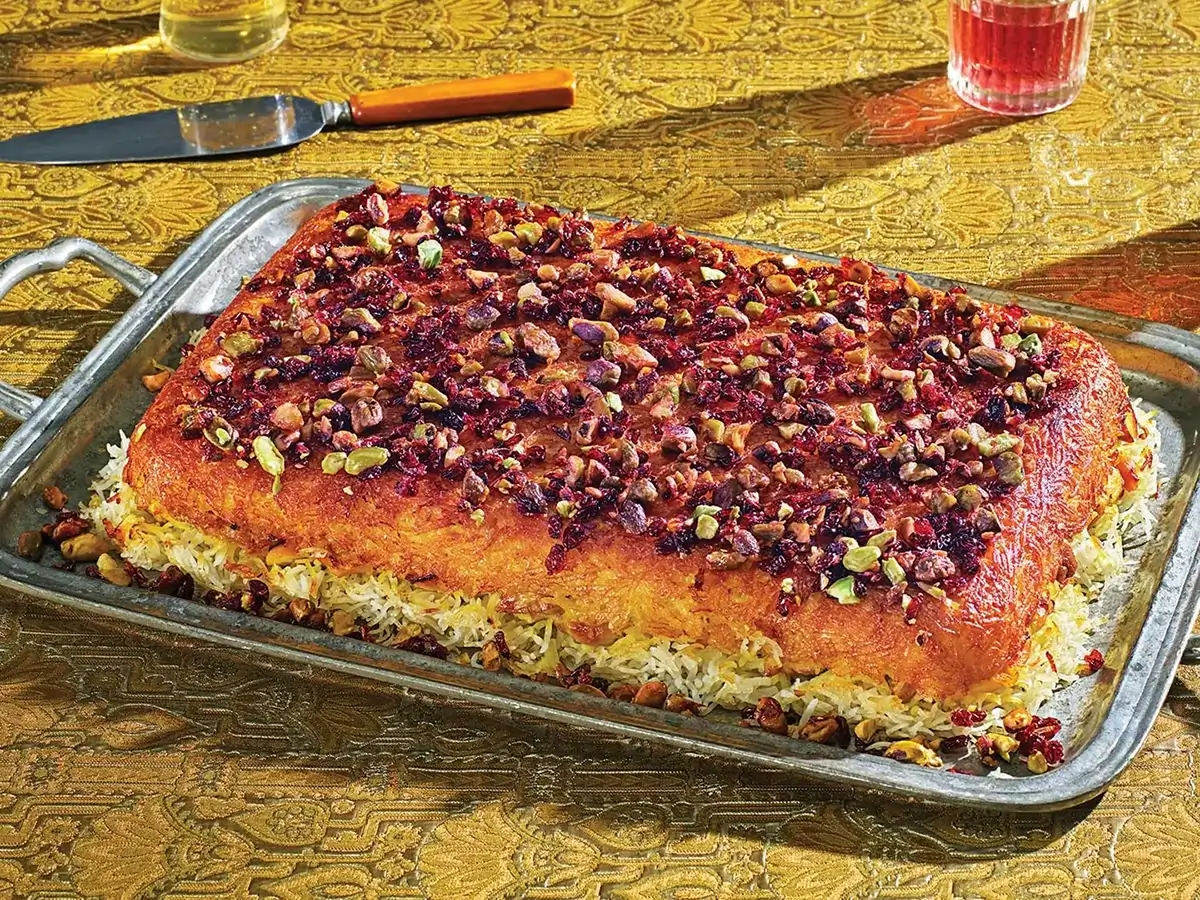
- Rice, water, salt, oil, butter (optional)
Recipe:
- 2 cups basmati rice, rinsed thoroughly
- 4 cups water
- 1 tsp salt
- ¼ cup vegetable oil
- 2 tbsp butter or ghee (optional)
- Soak rice in cold salted water for at least 30 minutes.
- Parboil rice until slightly softened but still firm (about 5-8 minutes). Drain and rinse.
- Heat oil and butter in a heavy-bottomed pot.
- Spread a thin layer of parboiled rice evenly across the bottom.
- Add remaining rice, creating a slightly domed shape. Poke several holes with a wooden spoon.
- Cover tightly with a lid wrapped in a kitchen towel. Cook on low heat for 45-60 minutes, or until crispy and golden.
- Invert onto a serving platter.
Tip: For extra crispiness, add a thin layer of oil directly onto the bottom of the pot before adding the rice.
2. Potato Tahdig (Tahdig Sibzamini)
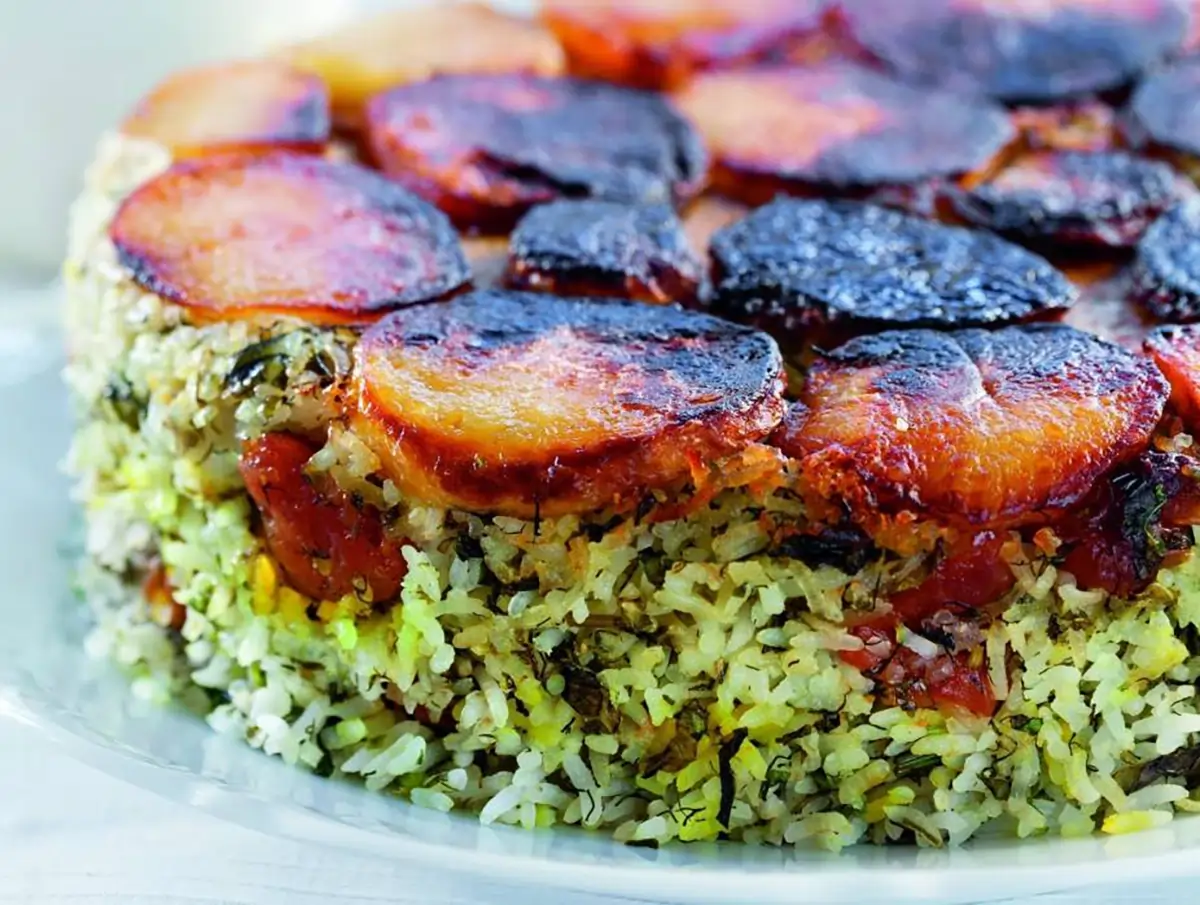
- All ingredients for Basic Tahdig +
- 2 medium potatoes, thinly sliced
Recipe:
- Same as Plain Tahdig, plus:
- 2 medium potatoes, thinly sliced
- Follow steps 1-3 of the Plain Tahdig recipe.
- Arrange potato slices in a single layer at the bottom of the pot before adding the rice.
- Proceed with steps 4-7 of the Plain Tahdig recipe.
Tip: Use starchy potatoes for best results. Soaking the potato slices briefly can help prevent them from sticking.
3. Lavash Bread Tahdig (Tahdig Nan Lavash)
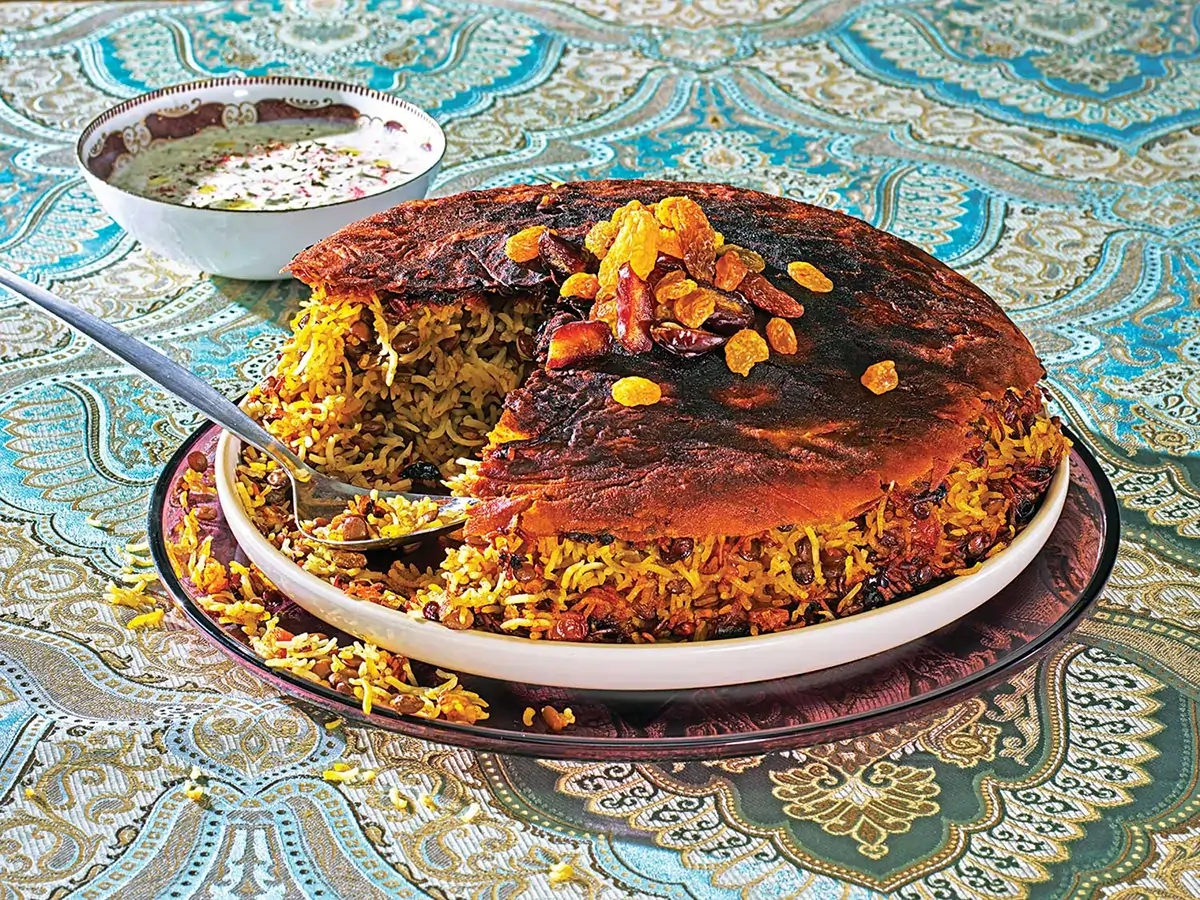
- All ingredients for Basic Tahdig +
- 1 lavash bread (Torn into pieces)
Recipe:
- Same as Plain Tahdig, plus:
- 1 lavash bread, torn into pieces
- Follow steps 1-3 of the Plain Tahdig recipe.
- Arrange lavash pieces at the bottom of the pot before adding the rice.
- Proceed with steps 4-7 of the Plain Tahdig recipe. Reduce cooking time slightly to prevent burning.
Tip: Lightly brush the lavash pieces with oil to ensure even crispiness.
4. Saffron Tahdig (Tahdig Zaferani)
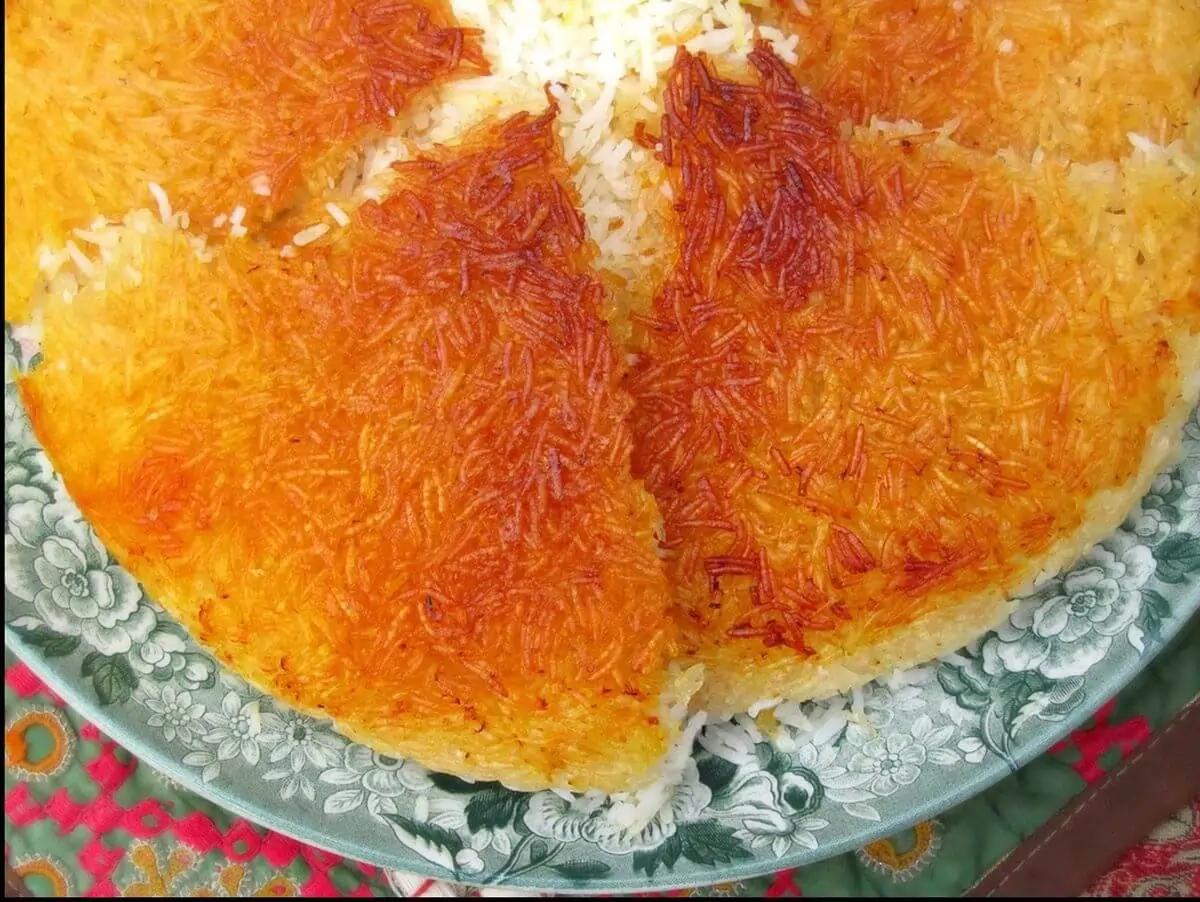
- All ingredients for Basic Tahdig +
- Pinch of saffron threads (soaked in hot water)
Recipe:
- Same as Plain Tahdig, plus:
- Pinch of saffron threads, soaked in 2 tbsp hot water
- Follow steps 1-3 of the Plain Tahdig recipe.
- Mix saffron water with the bottom layer of rice before spreading it in the pot.
- Proceed with steps 4-7 of the Plain Tahdig recipe.
Tip: Use high-quality saffron for the best flavor and color.
5. Yogurt Tahdig (Tahdig Mast)
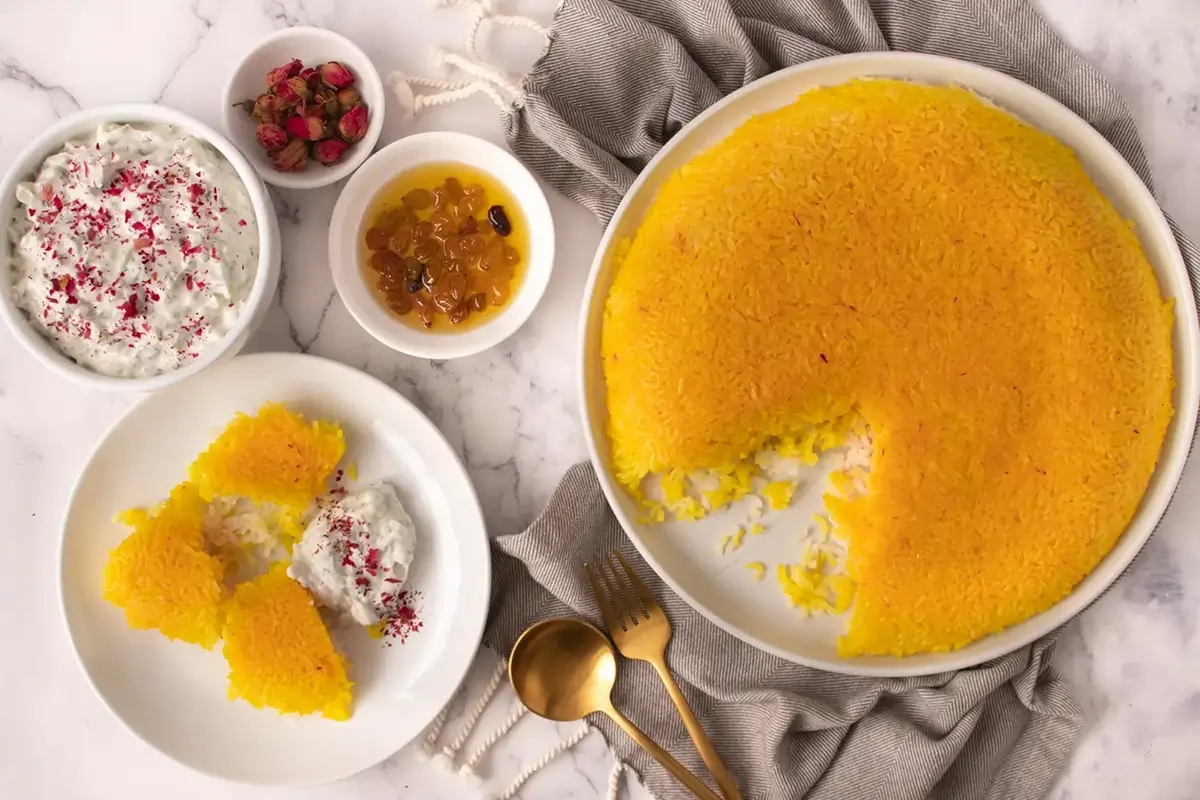
- All ingredients for Basic Tahdig +
- 2 cups plain yogurt
Recipe:
- 2 cups basmati rice, rinsed thoroughly
- 4 cups water
- 1 tsp salt
- ¼ cup plain yogurt
- 2 tbsp butter or ghee (optional)
- Mix the rinsed rice with the yogurt. Let it sit for 30 minutes.
- Parboil rice until slightly softened. Drain and rinse.
- Heat butter or ghee in a heavy-bottomed pot.
- Spread the yogurt-mixed rice evenly across the bottom.
- Add remaining rice, creating a slightly domed shape. Poke several holes with a wooden spoon.
- Cover tightly with a lid wrapped in a kitchen towel. Cook on low heat for 45-60 minutes, or until crispy and golden.
- Invert onto a serving platter.
Tip: Use a thick, full-fat yogurt for the best results. Don’t overcrowd the pot.
What to Serve with Tahdig
Tahdig complements a variety of dishes, enhancing the overall dining experience. Popular pairings include:
- Khoresh (Stews): Ghormeh Sabzi, Fesenjan, Gheimeh
- Kebabs: Koobideh, Joojeh, Barg
- Salads: Shirazi salad
- Yogurt: Plain yogurt, especially Greek yogurt
- Pickled Vegetables (Torshi): Adds a tangy counterpoint.
No matter which variation you choose, remember that patience and low heat are key to achieving that perfect, crispy Tahdig. Enjoy the process and the delightful results! Nooshe Jaan! (Enjoy your meal!)
FAQs about cooking Persian Tahdig
- What type of rice is best for Tahdig?
- Basmati rice is the most traditional and highly recommended choice for making Tahdig. Its long grains and starch content create the perfect texture for a crispy crust.
- Why is it important to soak the rice before cooking Tahdig?
- Soaking the rice helps to remove excess starch, which results in a fluffier texture and prevents the rice from becoming sticky. It also allows the rice to cook more evenly.
- What kind of pot is best for making Tahdig?
- A non-stick pot or a heavy-bottomed pot is ideal for making Tahdig. These types of pots help to prevent the Tahdig from sticking and burning.
- How do I know when the Tahdig is ready?
- The Tahdig is ready when it is golden brown and crispy. You should also hear a slight crackling sound from the bottom of the pot. You can carefully lift the lid (avoiding the steam) to check the color.
- How can I prevent my Tahdig from sticking to the bottom of the pot?
- Using a non-stick pot, adding enough oil to the bottom of the pot, and cooking the Tahdig over low heat are all important factors in preventing sticking.
- What if my Tahdig burns?
- If your Tahdig burns, immediately remove the pot from the heat. Let it cool slightly, and then carefully remove the top layers of rice. The burned Tahdig can be discarded, or you can try to salvage the less-burned parts.
- How can I make my Tahdig extra crispy?
- Ensure the lid is wrapped in a clean kitchen towel to absorb moisture, and use a generous amount of oil or butter in the bottom of the pot. Cooking it over low heat for a longer period also contributes to extra crispiness.
- Can I make Tahdig ahead of time?
- While Tahdig is best served immediately, you can prepare it ahead of time. Let it cool completely, then store it in an airtight container in the refrigerator. Reheat it in a low oven or skillet before serving. Note that it might lose some of its crispness.
- What are some variations I can try with Tahdig?
- You can experiment with different types of Tahdig by adding thinly sliced potatoes, lettuce leaves, lavash bread, or other vegetables to the bottom of the pot before adding the rice. You can also add spices like saffron or herbs for extra flavor.
- Why is my Tahdig sometimes hard to remove from the pot in one piece?
* Letting the pot sit for 5-10 minutes after cooking helps loosen the Tahdig. Make sure it isn’t stuck around the edges using a spatula. Also, use a large serving platter and invert quickly and confidently

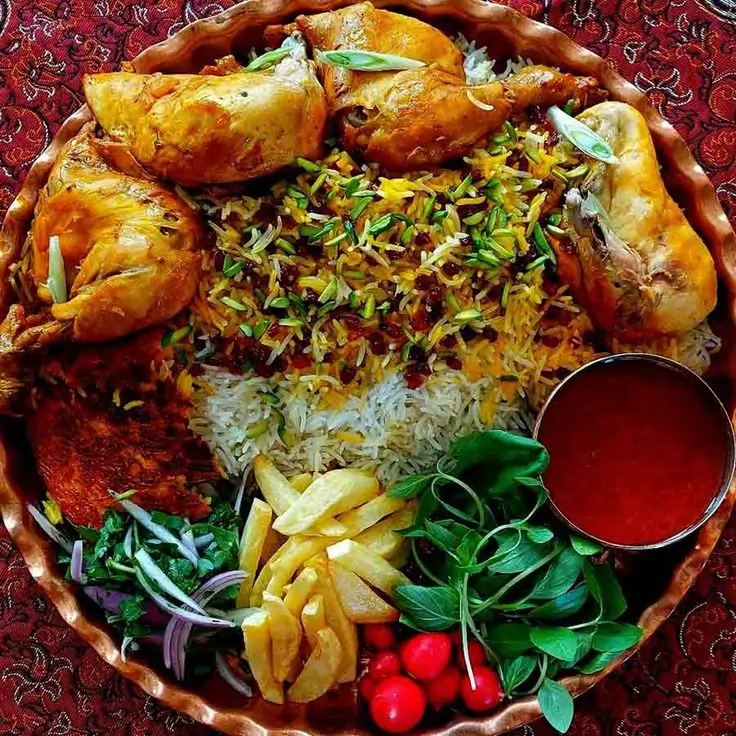

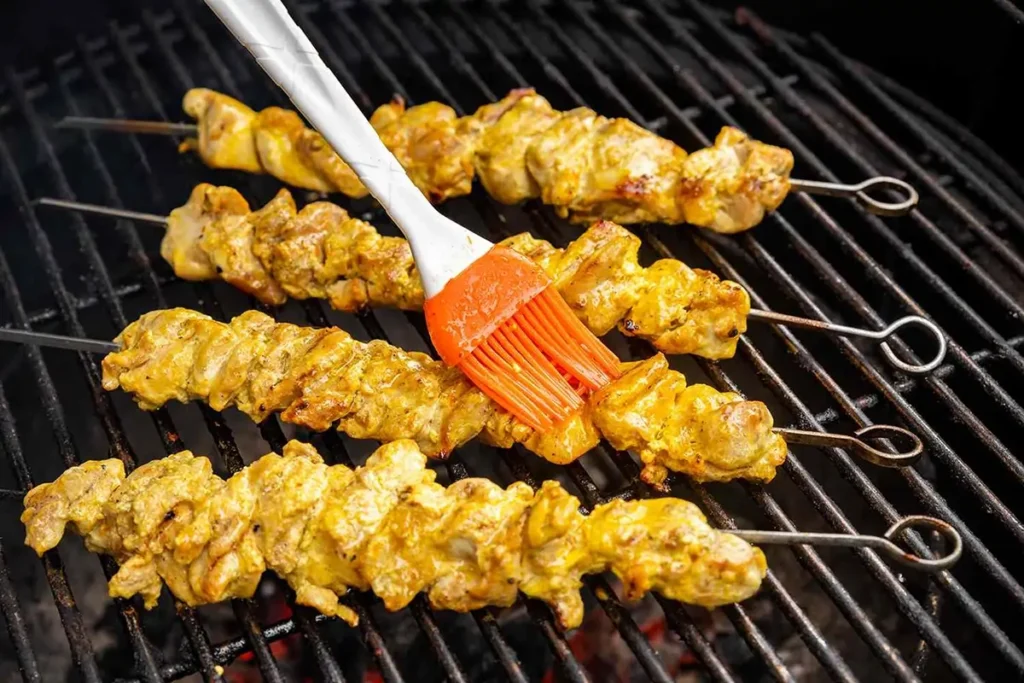

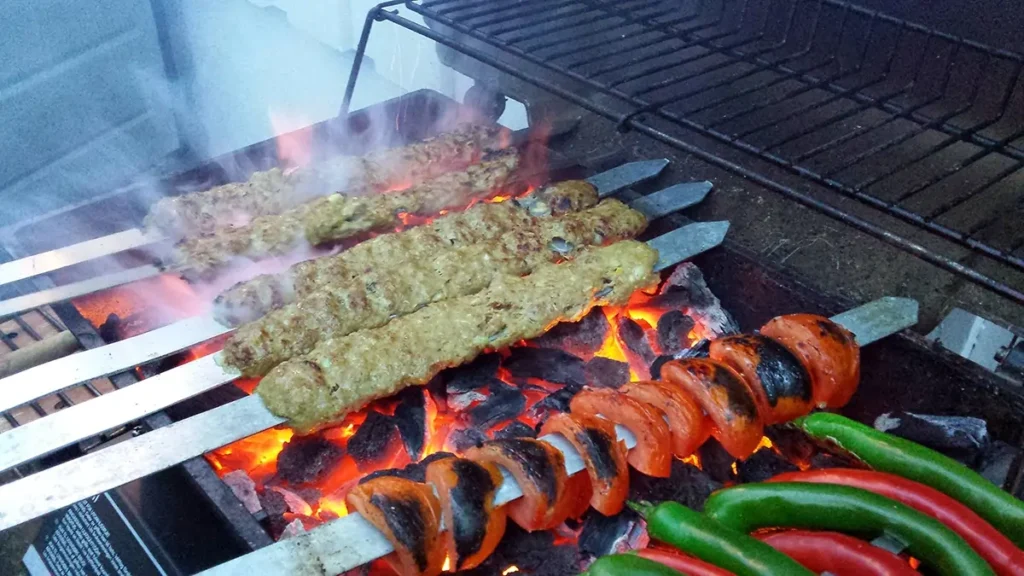
Responses